10 Types of Mold in a Crawl Space (with Pictures)
-
- Last updated:
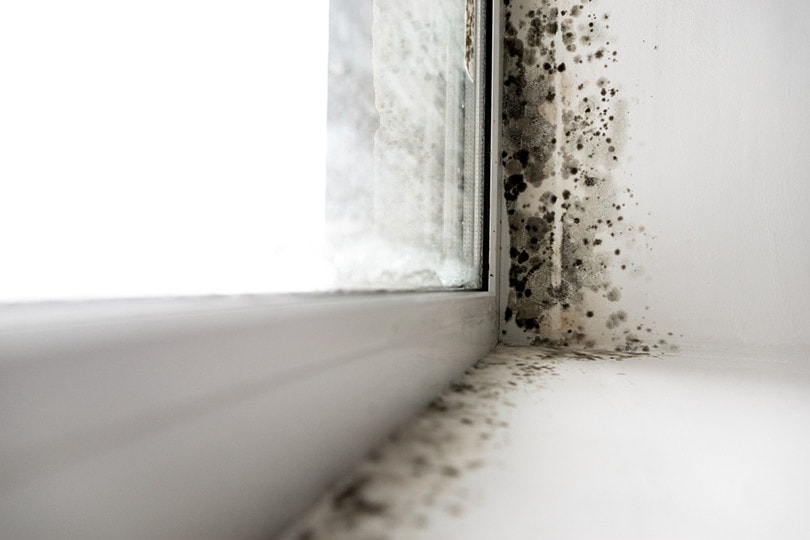
Mold is one of the most vital forms of fungi and a crucial aid in speeding up the decomposition of organic material. Abundant wherever you live, mold often infiltrates the home as it seeks out moisture-rich areas. A humid bathroom is a common site for mold growth, as is a crisper drawer full of veggies.
Despite its importance in nature, we don’t necessarily share a peaceful co-existence with mold. Most molds can be harmful, causing anything from mild allergic irritation to chronic medical conditions, and many even contribute to a structural breakdown in the house’s foundation. It’s critical to address mold as soon as it emerges.
As one of the home’s dampest and most overlooked areas, it’s no wonder that the typical crawl space is a mold hotspot. To help you keep your home safe, stay aware of these 10 types of mold that may be thriving under your floor.

The 10 Types of Mold in a Crawl Space
1. Stachybotrys Chartarum

| Color: | Greenish-black |
| Type: | Toxigenic |
If you have an exceptionally wet crawl space, stay on the lookout for Stachybotrys Chartarum, a slow-growing but resilient black mold. It prefers consistently damp surfaces with a healthy cellulose content, including wood, drywall, and wallpaper.
Stachybotrys has a slimy, glossy texture when it’s damp. It can still grow as the area around it dries, but it tends to take on a sooty consistency with less moisture. You’ll typically see it form in dark collections of asymmetrical circles.
Although most molds are harmful, Stachybotrys is one of the more dangerous toxigenic varieties. It releases a mycotoxin that can cause migraines, nosebleeds, respiratory issues, cancer, and even death. You’ll often need to call in a mold remediation expert if you suspect you have Stachybotrys growing in your home.
Fortunately, Stachybotrys needs extraordinary conditions to thrive, only growing when the relative humidity reaches at least 90% or higher. Without standing water, it’s unlikely to show up. Flood damage and leaks give it the best chance to grow.
2. Aspergillus
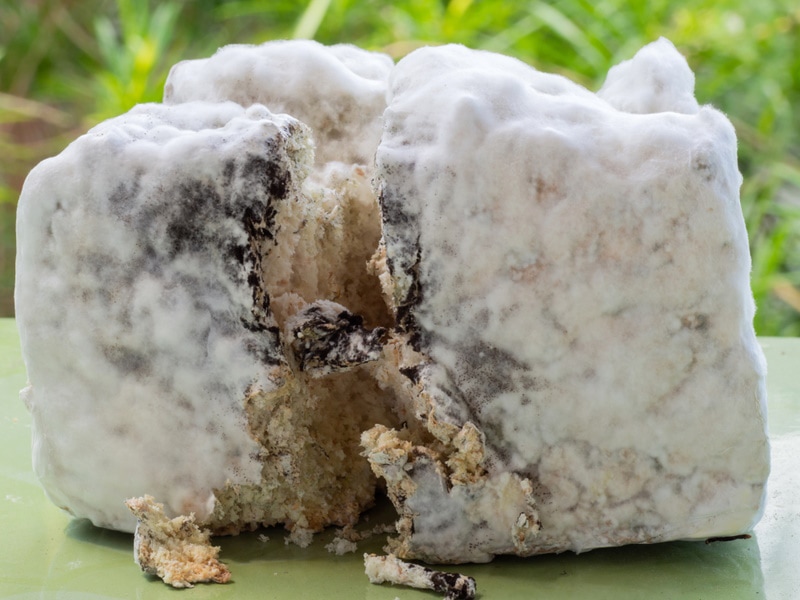
| Color: | Varying greenish hues |
| Type: | Allergenic, toxigenic |
It can be hard to peg down the type of Aspergillus mold you may have in your home, as there are over 180 varieties ranging in color from yellow to blue. You’ll often see this common mold manifest as fuzzy, cottony growths on damp surfaces.
Depending on the variety, Aspergillus can cause mild allergic reactions or severe health complications. Many individuals inhale Aspergillus spores every day without any symptoms. On the other hand, people with weak immune systems or lung conditions may develop aspergillosis, an infection that can cause asthma attacks, headaches, fever, and, in extreme cases, internal bleeding and sepsis.
3. Cladosporium
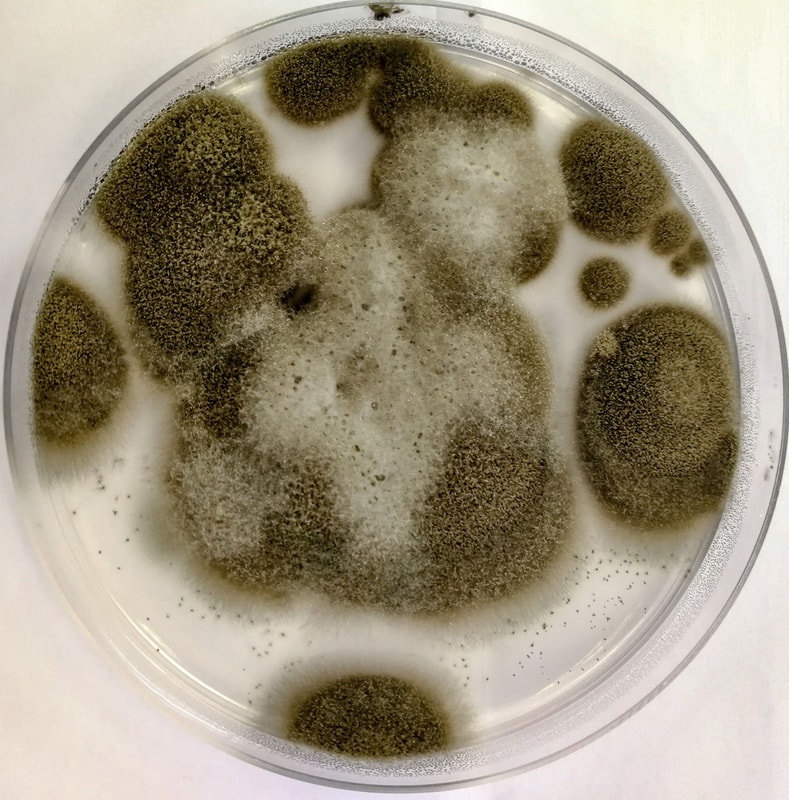
| Color: | Green, brown, black |
| Type: | Allergenic, pathogenic |
A dimly lit and damp crawl space is the perfect place for the dark-loving Cladosporium to set up. There are over 500 types of Cladosporium, and it can pop up anywhere from carpeting and furniture to bathrooms and basements. Most varieties have a soft appearance revealing dark, dull shades of green, brown, and black.
Most Cladosporium species aren’t toxic, but they can still cause allergic reactions in people and pets. Some people don’t experience symptoms, while others may develop a runny nose, cough, itchy face, and watery eyes. Infections in the toenails, fingernails, and eyes are also more typical of Cladosporium than many other types of mold. Severe cases may lead to asthma attacks or fungal sinusitis.
4. Penicillium
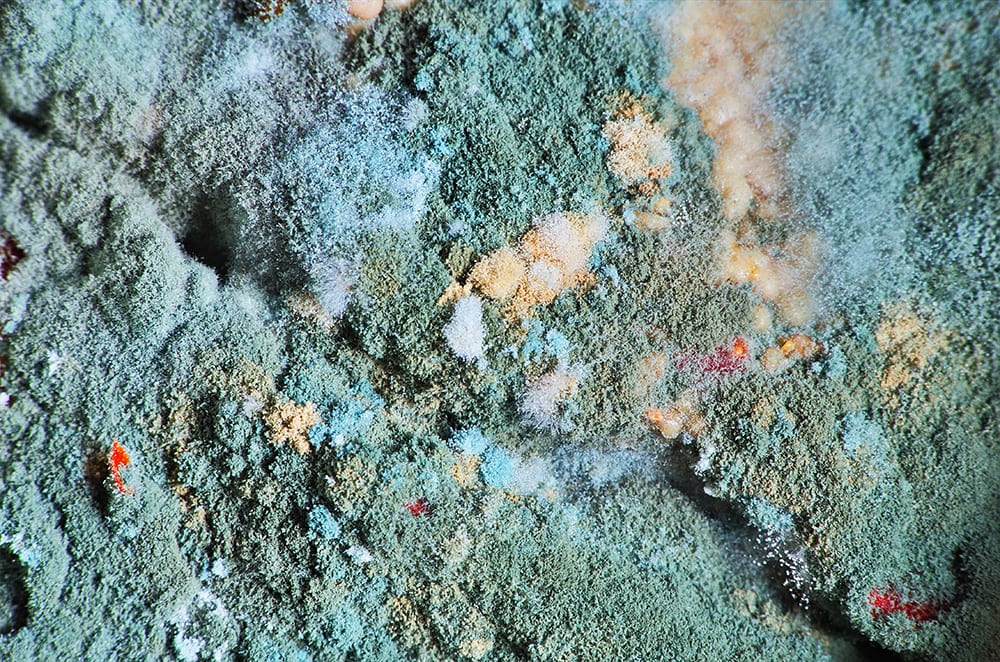
| Color: | Blue, green |
| Type: | Allergenic |
While most molds are better off left alone, Penicillium has distinct economic benefits in penicillin and cheese production. That said, this velvety blue-green mold is no more welcome to grow in our homes than any other type of mold.
Penicillium has a powder-like texture and will show up anywhere with enough moisture. It’s a frequent source of spoilage in the fridge and pantry, being one of the first molds to grow on fruits, vegetables, and bread. Across the home, some of its favorite places include textiles and furniture, especially leather and cloth materials.
Most types of Penicillium need little humidity to grow, so it’s one of the more common molds you’ll find in indoor air and dust. Some Penicillium varieties release hazardous mycotoxins, but generally, the mold causes allergic reactions such as hay fever and inflammation.
5. Alternaria

| Color: | Dark brown, gray |
| Type: | Allergenic |
Alternaria is an abundant outdoor mold in soil, plants, and wood. Being pathogenic to plants, it’s an agricultural concern contributing to significant crop loss. It tends to linger in the air, where it can easily blow into your home to settle on indoor surfaces.
Once inside, Alternaria can grow on houseplants, furniture, carpet, clothing, A/C systems, drywall, tile, and more. It can live nearly anywhere with enough moisture and spreads quickly through the home. Though a few varieties emit mycotoxins, the most common threats include asthma symptoms and respiratory disorders. Its effect varies from person to person, with healthy individuals often experiencing no symptoms.
6. Chaetomium
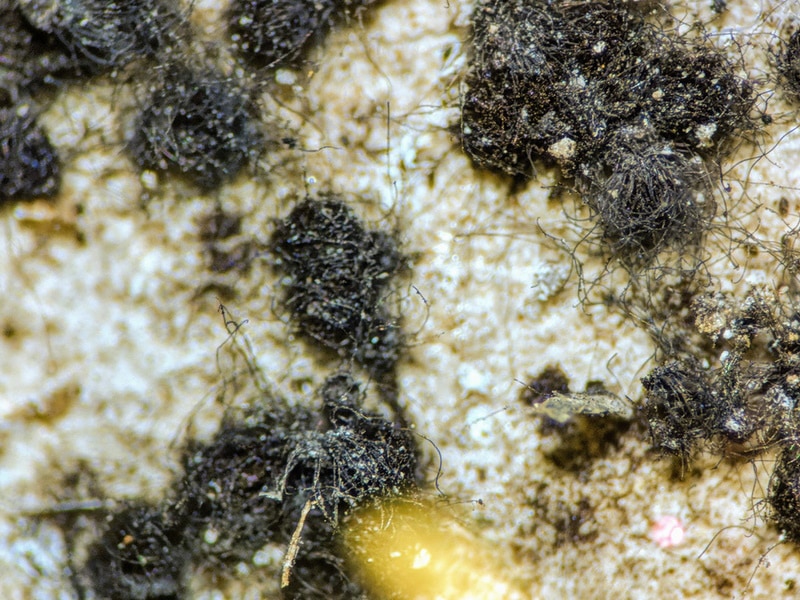
| Color: | Dark brown |
| Type: | Allergenic, pathogenic |
Chaetomium is a dark allergenic mold that may show up as a result of water damage or flooding in the crawl space. It feeds on cellulose, spreading across wood framing, drywall, and wallpaper. As it grows, Chaetomium darkens from a white cotton-like growth to a blue-green or olive hue. Its dark color makes it easy to mistake for Stachybotrys.
Several Chaetomium species produce mycotoxins. Many are known to cause cancer, congenital disabilities, and neurological disorders. Most exposures result in milder temporary symptoms such as allergic reactions, dry throat, and headaches.
7. Trichoderma

| Color: | White, green, yellow |
| Type: | Allergenic |
Trichoderma is one of the most widespread types of mold around outdoor soils and plants. It has unique benefits in specific industries because it prefers attacking mushrooms and other fungi. You’ll often find it indoors in high-humidity rooms or after you experience water damage.
As it ages, Trichoderma changes from a white or yellow shade to dark charcoal or green. You may find it growing on wallpaper, drywall, water-logged wood, or carpet, which should be cause for concern.
Although it usually causes typical sneezing, asthma, and coughing, Trichoderma’s biggest threat is to your home’s foundation. Trichoderma produces high amounts of cellulase, an enzyme that causes wood to rot. Without swift removal, it may damage your house’s structural integrity.
8. Fusarium

| Color: | Pink, red, white, tan |
| Type: | Allergenic |
Fusarium is a hardy mold capable of growing in frigid temperatures. It’s notably hazardous in agricultural arenas as it flourishes in soil and plants. Home gardens may be at risk of “Fusarium wilt”, a disease that targets and kills tomato plants, peppers, and several other crops.
Although it’s less common indoors, Fusarium will grow on soft fabrics, appearing in carpets, drapes, and cloth furniture as reddish marks. It spreads fast and can cause substantial damage to your home if given time and moisture to thrive.
A Fusarium infection is rare but can often cause allergic reactions and skin, nail, and eye problems. Some strains emit mycotoxins, leading to gastrointestinal disorders, pneumonia, and even chronic conditions like cancer.
9. Ulocladium

| Color: | Brown, black, gray |
| Type: | Allergenic |
Ulocladium is another mold often confused with Stachybotrys, a dark mold that commonly arrives after water invades the crawl space. It has a light, fluffy consistency, and it can also easily blow into your home. Without a consistent water supply, it can’t grow, though dormant spores may reactivate if heavy moisture shows up later.
Ulocladium causes allergy symptoms such as asthma and hay fever. It may cause more severe respiratory ailments or bodily infections in individuals with compromised immune systems.
10. Acremonium
| Color: | Varying whites, pinks, grays |
| Type: | Pathogenic, toxigenic |
Acremonium appears in damp areas often as a result of flooding. The slow-growing mold becomes powdery and dry with age, showing up in a broad spectrum of colors including oranges, whites, pinks, and grays. Look for it in high-moisture areas, such as water-damaged bathrooms and basements, or in air conditioner drip pans and condensate lines.
As a toxigenic mold, acremonium can be extremely hazardous. Immuno-compromised individuals are susceptible to nail and eye infections, and it can even lead to bone marrow and immune system diseases, cancer, and neurological disorders.

How Do You Remove Mold From a Crawl Space?
Nearly all mold can damage the home and cause health issues, especially in older individuals, young children, and people with weakened immune systems. It’s crucial to identify and remove mold growth as soon as possible.
Small patches of mold may be something you can tackle yourself. If the growth covers more than 10 square feet, call a mold remediation professional since it has likely spread too far for you to remove safely.
You can attack limited mold growth with bleach, hydrogen peroxide, or a 1:1 blend of water and white vinegar. Spray the mold and scrub it away with a stiff brush.
After removing it, keep mold away by ensuring moisture doesn’t accumulate. Replace water-damaged items, seal up cracks and gaps where water can penetrate, and run a dehumidifier to keep the relative humidity at or below 50%, which will prevent mold from growing.

Conclusion
Since it’s closed off from the rest of the house, the crawl space is easy to forget about. Without proper attention, you could miss the signs of an extreme mold outbreak happening right beneath your feet. By the time you notice it, you may already be too late.
Checking for mold growth is crucial to prevent illness and damage to your home. By staying aware of the potential harm of these common types of mold, you can keep your home safe for the long term.
Featured Image Credit: Burdun Iliya, Shutterstock
Contents

